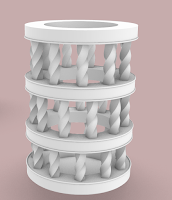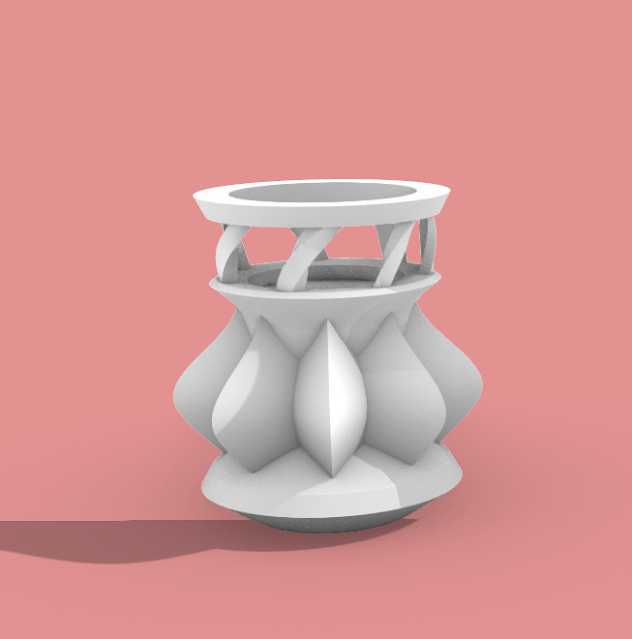[POTW: 8 & 9] 3D Printed Hollow Form Objects: Concept Generation & Hybrid Form
Concept Generation
For this final assignment: 3D hollow forms, we were tasked with making a minimum of 6 self-supporting hollow vessels with single or double perimeters by making solid closed polysurfaces. In Rhino 7 with commands like extrudeCrv, planarSrf, loft, rotate, copy, & booleanUnion.
A few really helpful commands for this project that I learned were [showEdges], [selClosedPolysrf], and [what]. [what] is really helpful for checking if the object is a valid and if it's a solid closed polysurface, with that command I figured out that of my concepts below, a few wouldn't work because the edges didn't line up properly or the open edges didn't have any closed planar loops that would allow the object to close.
I also used some of these commands: [mirror] [chamferEdge] [chamferSrf] [filletEdge] [filletCorners] [taper] [bend] [stretch] [twist] [flowAlongSrf] [blendSrf] [blendCrv] [trim] [arrayPolar] [roundHole] [joinEdge] [rotate] [rotate3D].
Sketches & Concepts:
Sketches & Concepts:
 |
| Plant - I really like this one, but I couldn't get the srf/edges to close. :((((( |
 |
| Rings + variation |
 |
| Something modern?? |
 |
| Stacked cubes - just one stack. |
 |
| A bunch of vases, basically same-same |
 |
| More vases/bowls |
 |
| Star shapes - squiggles and two bowls? |
 |
| Another angle of the star stuff |
 |
| Here's an overwhelming view of my concepts + some variations. |
 |
| Again, now shaded. |
Process stuff:
 |
| Some sketches |


The Hybrid Object
Part two of 3D hollow forms is a group project.In pairs, we had to select 3 concepts each and brainstorm/mash the concepts together, and then evaluate each mashup for form and function, if it was self-supporting, and the likelihood of how successful the hybrid object would be for printing on the FDM printers. Once the final hybrid object is made, it's exported as an stl. file to PrusaSlic3r to simulate the print to check it for any issues. For the final hybrid object, we could use Rhino 7, tinkerCAD, meshmixer, or any other programs we've learned. One of the main requirements is that the final print has to fit in a 4"x4"x6" box.
Unfortunately, I didn't have a group partner for this project, so I picked 2 of my concepts and made three conceptual hybrids.
For my hybrid object, I decided on these two concepts to mashup.
 |
| Concepts - (left) is a representation of a ring influenced from architecture, (right) is a twisty bao-esque bowl. |
 |
| Hybrid 1 |
The final object in PrusaSlic3r - I wasn't sure how to keep the very top layer capped. I sliced the model with double perimeters, checking/unchecking spiral vase, and unchecked 'ensure vertical shell thickness'. The printability of this hybrid, I wanted to use a double perimeter print and had it sliced with 0% infill. I did have to edit the model a few times as the top ring piece and pillars didn't line up well in Prusa. I do think it will be water tight, but there is a possibility to that it may have issues with the top ring joining the pillars. In Prusa, it showed 1 layer just before the bridge infill - as an 'overhang perimeter' when connecting the pillars to the top ring - this could be a potential issue? I think the piece will be structurally sound, but I won't know for sure until it's printed. Fingers crossed! |























.png)


Comments
Post a Comment